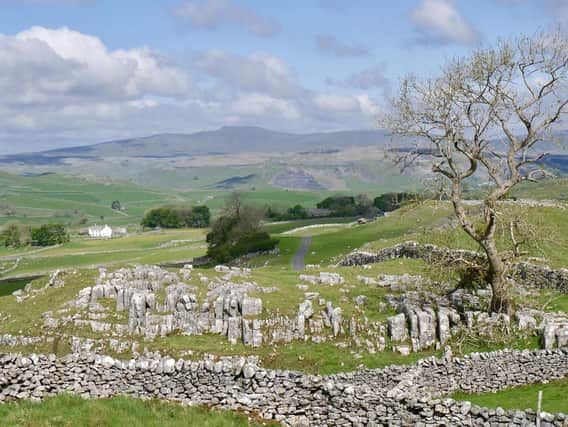Major restoration project will see Ingleborough in the Yorkshire Dales 'rewilded' as part of plans to change management of the uplands


Wild Ingleborough aims to reverse centuries of damage caused by sheep grazing by working with farmers, landowers and a number of agencies.
The Yorkshire Wildlife Trust and Natural England are leading the project alongside the University of Leeds and the Woodland Trust.
Advertisement
Hide AdAdvertisement
Hide AdThe area's distinctive limestone pavements and grazing pastures will be transformed into a 'nature haven' with a range of species able to return to their original habitats.
The peatlands will be restored to boost carbon capture, and native woodland and scrub planted over an area covering 1,200 hectares from the River Ribble to the summit of Ingleborough. It will be one of the first locations in England where the natural tree line will be restored with heather moorland and lichen heath.
There are plans to plant 30,000 trees in a 40-hectare area, with more woodland expected to naturally regenerate.
The ultimate goal is to attract species such as black grouse, red squirrels and cuckoos - as well as boost the local curlew population, which currently stands at just two pairs within the Ingleborough area. Plants that could return are juniper, which has suffered from disease, primrose, globeflower and various ferns.
Advertisement
Hide AdAdvertisement
Hide AdLess intensive land use will also enable flood mitigation work to take place with more tree cover and less soil erosion.
Three hundred hectares of land are already being restored as part of the first phase of the project, with 3,000 native trees planted, including rowan, hawthorn and hazel, and hundreds of metres of drystone wall rebuilt.
Yorkshire Wildlife Trust chief executive Rachael Bice said: “Ingleborough is one of the most iconic and cherished landscapes in our great county. The opportunity to support nature to flourish here is something we are incredibly proud to be involved in. By intervening carefully, we will see the landscape of the Dales transform; restoring natural process and communities of plants and animals, which will help to secure and enrich the future of Yorkshire’s residents and visitors too.”